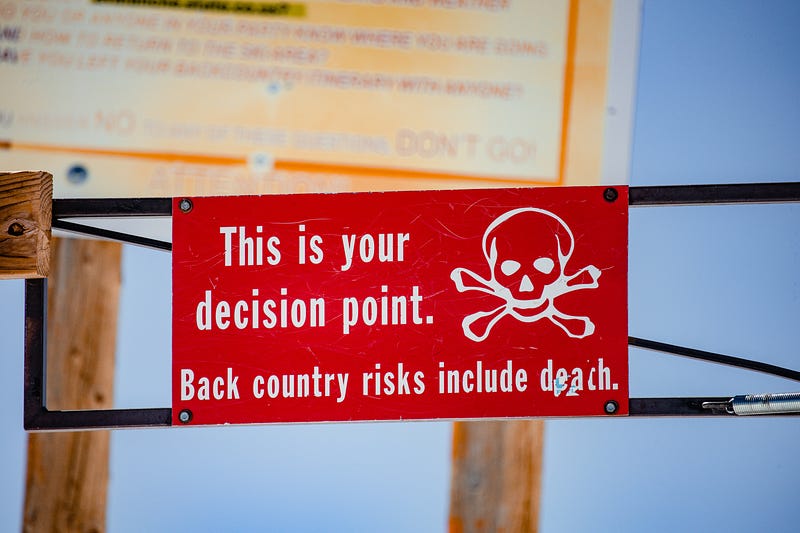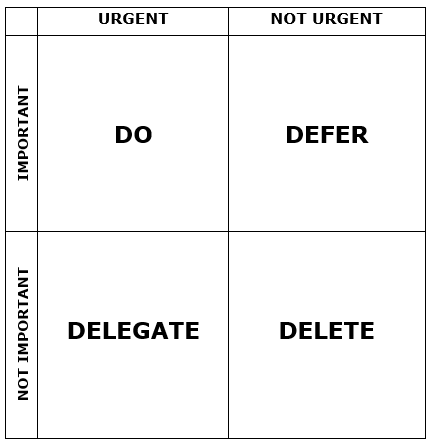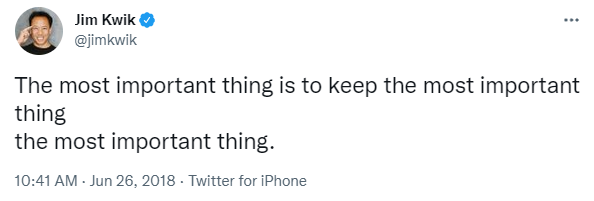# Mastering the 4 D's of Decision-Making: A Comprehensive Guide
Written on
Chapter 1: Understanding Decision-Making
You might be familiar with two of the four D's of decision-making, but do you know all four?

Photo by Joshua Sukoff on Unsplash
While my choices may not lead to dire consequences, they can certainly hinder my progress or momentum. For instance, if I indulge in a large biscotti with each cup of coffee, it may not have immediate repercussions, but it could jeopardize my commitment to a healthier diet aimed at improving my overall well-being.
Through my own indecision, I sought out how experts navigate these challenges. I realized that I can't afford to second-guess my choices or ponder what to do when. Efficient decision-making boosts productivity and saves valuable time.
My research brought me to Jim Kwik, a renowned author and human potential specialist, known for his book Limitless: Upgrade Your Brain, Learn Anything Faster, and Unlock Your Exceptional Life. In a productivity course I completed in September 2022, Kwik introduced me to a refined version of the Eisenhower Matrix, a method popularized by President Eisenhower. By utilizing the 4 D's of decision-making, we can categorize our choices based on their urgency and importance—a simple yet effective strategy for decision-making akin to that of a President.
Here’s the framework we will explore:
- The urgent versus the important
- The four D’s of Decision-Making:
- Do
- Defer
- Delegate
- Delete
- The key takeaway
The Urgent vs. The Important
President Eisenhower had a remarkable method for making decisions. Renowned for his productivity despite a packed schedule, he famously remarked in a 1954 speech, “I illustrate it by quoting the statement of a former college president… This President said, ‘I have two kinds of problems: the urgent and the important. The urgent are not important, and the important are never urgent.’”
Eisenhower used this insight to inspire others to collaboratively tackle the pressing issues of their time. We will adopt this approach to help categorize our priorities, enhancing our productivity during the time we have.
The Four D's of Decision-Making
Eisenhower’s decision-making framework is designed to sort problems based on their importance and urgency, evolving into what we now refer to as the Eisenhower Box or Eisenhower Matrix. This time management tool sorts all decisions into one of four categories:

Image created by the author.
In this straightforward process, tasks are categorized as DO, DEFER, DELEGATE, or DELETE.
Do
When something is both urgent and important, it should be tackled immediately. These decisions often involve situations that require our personal attention and cannot be postponed. For example, if a loved one were in an accident, our response would be both urgent and important.
Defer
Tasks that are important but not urgent fall into this category. These activities are crucial for achieving our goals but can be scheduled for later. It’s important not to defer them indefinitely! This flexibility allows us to prioritize essential tasks without unnecessary stress. This is where we should focus most of our efforts.
Once we've set our schedule, we can methodically work through these important tasks, ensuring they receive the attention they deserve.
Delegate
If a task seems urgent but isn't particularly important, it may be possible to delegate it to someone else. Do we have a colleague or friend who could assist? For instance, someone might help with transporting a child to an event or preparing a presentation. Delegating these tasks can free up time for more critical responsibilities.
Delete
Tasks that are neither urgent nor important should be eliminated from our agenda. Activities like scrolling through social media or binge-watching shows do not warrant our time. By eliminating these distractions, we maximize our efficiency.
The Key Takeaway
The essence of categorizing our tasks is to ensure that we dedicate most of our time to what truly matters. As we plan our days, we should consistently verify that we are advancing our personal priorities and commitments. In Jim Kwik's course “Limitless Productivity,” I learned that keeping our key objectives at the forefront is the most efficient use of our time.
As Jim Kwik tweeted,

Image captured by screenshot by the author.
Numerous individuals have adapted this decision-making matrix, including Stephen Covey in his book The Seven Habits of Highly Effective People (see Habit 3: “Put First Things First”). Millions have benefited from this approach, streamlining their priorities and commitments.
By concentrating on what’s most important, we can utilize this matrix and the 4 D’s throughout our day to assess and categorize our tasks into do, defer, delegate, or delete. This practice not only saves time but also helps avert decision-making pitfalls.
Remember, the most important thing is to keep the most important thing at the forefront of your focus.
Chapter 2: Practical Applications of the 4 D's
In this video, titled "CS107 WEIGHTED DECISIONS Process," learn how to make decisions using weighted criteria. This insightful presentation will enhance your understanding of effective decision-making.
The second video, "Deciphering Judicial Decision-Making: Legal, Institutional, and Personal Influences in U.S. Courts," explores various factors influencing judicial decisions, offering a deeper understanding of decision-making processes in legal contexts.